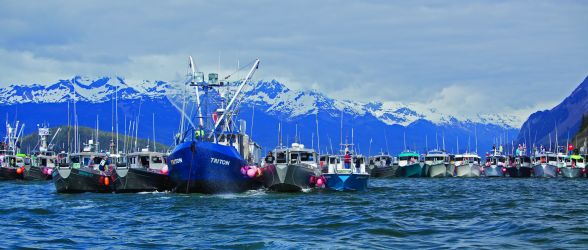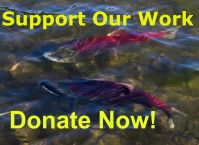This is an archived webpage.
Click here for information on the 2019 situation.
You have the right
to peacefully assemble.
In Cordova on May 16, 2015, over 170 boats and hundreds of onlookers joined in a peaceful protest to demonstrate against the Navy's planned live fire training activities in the Gulf of Alaska scheduled for June 2015.

From June 15th - June 26th , the Navy conducted ‘Northern Edge‘ very close to the South Central Alaskan coastline. Dangerous sonar and weapons were used in what they call ‘realistic’ war games. The training area overlaps with State Marine Protected areas, NOAA Fisheries Protected areas and include critical and Essential Fish Habitat. These trainings take place during the most prolific breeding and migratory periods of the marine supported life in the region (salmon, whales, birds and more). Immediate harm to marine life includes death from direct explosions, use of sonar (disorients, kills, and causes beaching of marine animals), and the physical destruction and chemical pollution of essential habitat areas.
These areas have not recovered from the 1989 Exxon Valdez oil spill, and are home to Alaska’s most diverse population of Indigenous Peoples, who rely on its bounties for subsistence, commercial and traditional hunting and gathering activities. Native inhabitants living on the northern coast of the Gulf of Alaska include Eskimo, Eyak, Athabascan, Koniag, Tlingit and Aleut, and collectively constitute 30 percent of the area’s overall population.
The Navy acknowledges the harm and deaths the exercises pose to marine mammals and refers to the thousands of deaths or “takes” that are anticipated when these exercises are carried out. When it comes to fish, including salmon, it is clear from the Navy’s Environmental Impact Statement (EIS) that the extent of the damage and risk are largely unknown.
